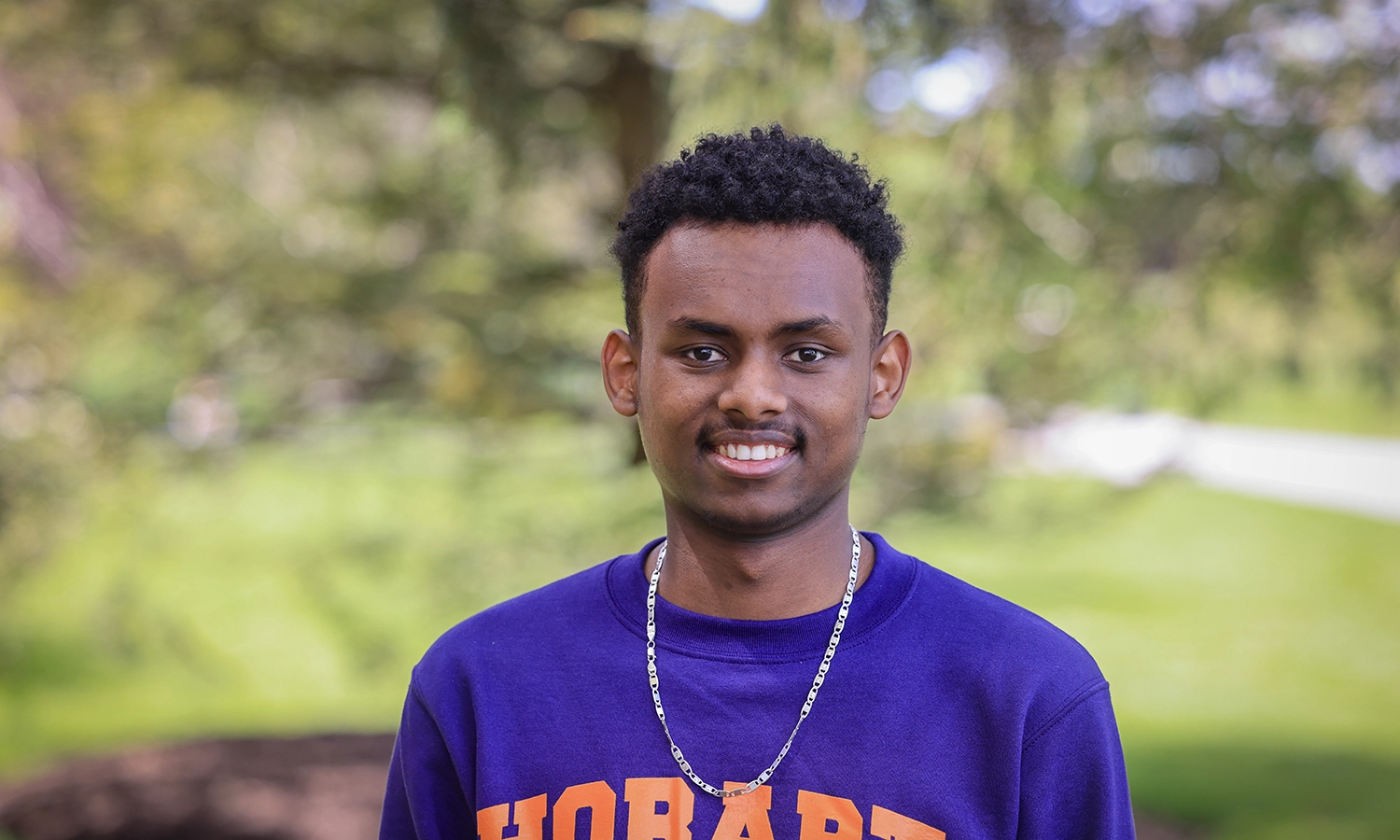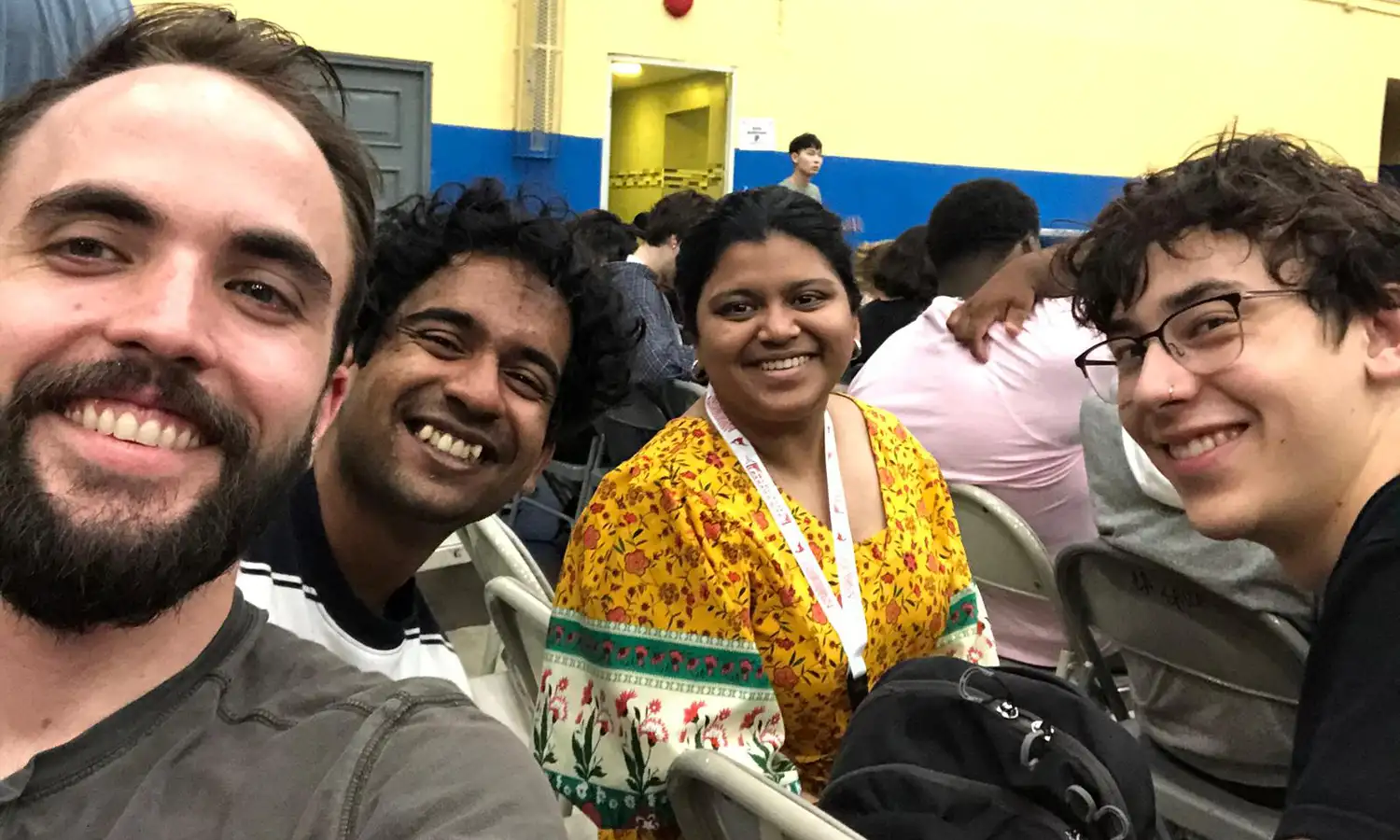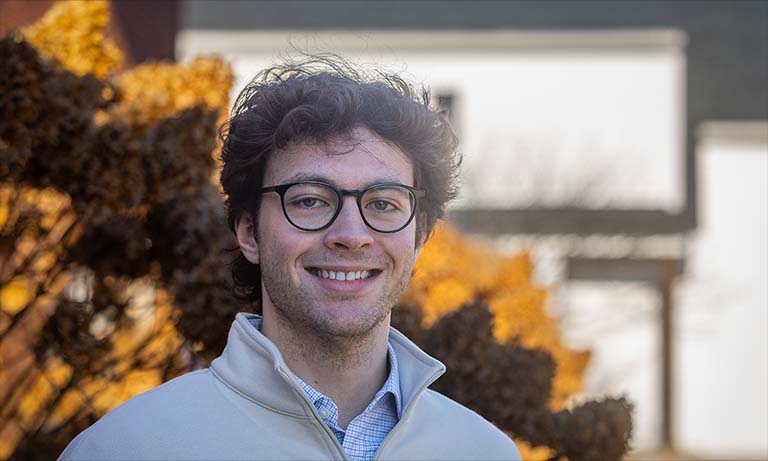
HWS News
19 February 2024 • STEM Astronomy Research, Problem-solving and Jazz: Five Questions with Biruk Nardos Abebe ’25 By Andrew Wickenden '09
Physics and computer science double-major Biruk Nardos Abebe ’25 reflects on his recent presentation at the American Astronomical Society conference in New Orleans.
For more than a year, Biruk Nardos Abebe ’25 has been developing a research project exploring “water world” exoplanets, combining his interests in physics, astronomy and computer science. In January, he presented his findings at the American Astronomical Society (AAS) conference in New Orleans. Here, he discusses the project, the conference and his experience at HWS.
Can you tell us a little about yourself?
I’m a first-generation student from Addis Ababa, Ethiopia. I double major in physics and computer science with a minor in math, and I have a special interest in astronomy and astrophysics.
I am the president of the Astronomical Society and the secretary for the HWS Model African Union. Also, I work with Student Engagement as a Community Assistant and as a Teaching Fellow for the Physics Department. In my free time I love playing basketball, cooking and stock trading.
At the AAS conference, you presented research in a session on the theory of exoplanet atmospheres. What was your presentation’s main focus and what were some of the most interesting results?
The water world hypothesis refers to planets predominately composed of water, as opposed to gas giants and lava or rocky planets.
I started a project the summer after my sophomore year during a research internship at the University of Maryland. The research focused on the interior modeling of sub-Neptune exoplanets, specifically working on the water world hypothesis for TOI-270d and attempting to explain it using detailed interior modeling.
A lot of research has suggested that sub-Neptunes could be water worlds and that TOI-270d is a good candidate. Previous research suggested the planet could be a water world with a mass fraction of approximately 50 percent, but my research shows that a wider range of mass fractions is also possible; it could range from 14 to 60 percent. The planet I am working on is going to be observed by the James Webb Space Telescope. These observations might be able to tell us whether the planet is a water world, as explored in my research, which would be a groundbreaking result.
What were some of the highlights of the conference?
My favorite part was the exhibit time, where you have the chance to talk to different space companies and research institutes, as well as meet other scientists and aerospace engineers.
Additionally, being from Addis Ababa, Ethiopia, and only having lived in the northern part of the United States, this was my first time going to the South. I was excited about the experience. New Orleans has an amazing jazz culture, which I really enjoyed, as well as the unique food.
How does the project connect to your other academic work at HWS?
After my first year at HWS, I had the opportunity to participate in the Mentored Summer Research Program at HWS. That experience laid the foundation for my astronomical research.
My research with Associate Professor of Physics Leslie Hebb focused on exoplanet detection using the transit method and NASA’s Kepler Data. This experience not only taught me about stars, sunspots, starspots and exoplanets but also provided me with a strong foundation in astronomical data analysis using Python.
Dr. Hebb's unwavering support and expertise have been instrumental in my growth as a young scientist. I learned how to think like a researcher, critically analyze data and apply theoretical knowledge to practical problems. These skills were invaluable as I took on more complex challenges, allowing me to dive deeper into the intricacies of sub-Neptune exoplanets at the University of Maryland the following summer.
How did the AAS experience help illuminate or clarify your plans after graduation?
I plan to go to grad school to do my Ph.D. in astronomy and this experience has made me more motivated and excited. It gave me a chance to see what is in the field of astronomy and astrophysics, helped me to see what others are doing, learn from them and see the perspectives of others. Also, I made connections with professors and students who are in the grad schools I want to apply to, which is a golden opportunity I wouldn’t get anywhere else.
HWS has been instrumental in providing me with the resources, mentorship and opportunities that have allowed me to thrive in my academic pursuit and I am proud to represent HWS as I move forward in the world of science and discovery.
Nardos Adebe extends thanks to Professor and Chair of Physics Donald Spector, Hobart Associate Dean David Mapstone ’93, P’21 and Vice President of Diversity, Equity and Inclusion Bill Woodson for sponsoring his travel to the conference, as well as the Astronomy Department at the University of Maryland and his mentors there, Dr. Matthew C. Nixon, Jegug Ih and Dr. Eliza Kempton.



